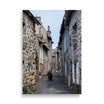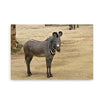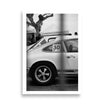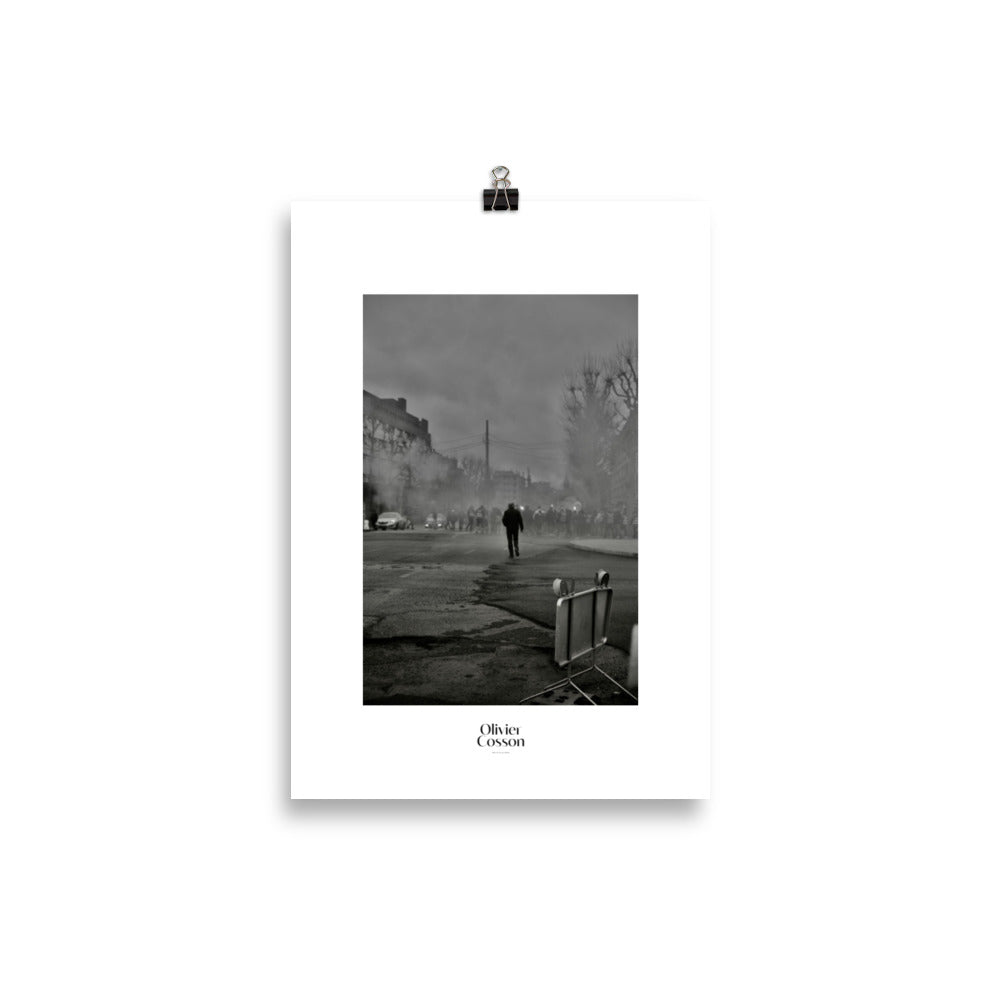Landscape Photography: Immortalizing the Beauty of the World
Introduction Landscape photography is an art that captures the majesty and diversity of our planet. From majestic mountains to serene beaches, every landscape has a story to tell. In this article, we'll explore the art of landscape photography, the importance of posters and posters in interior design, and how you can incorporate these elements into your space to create an inspiring and personalized environment.
The Magic of Landscape Photography
-
Light and Time of Day : Light plays a crucial role in landscape photography. The golden hours of morning and evening often provide the best light for spectacular photos. The soft, warm light during these times highlights the textures and colors of the landscape.
Composition : Good composition is essential. Use rules like the rule of thirds to place interesting elements in your images. Also consider incorporating leading lines, such as a path or watercourse, to guide the viewer's eye through the image.
Proper Equipment : A sturdy tripod is essential for landscape photography, especially in low light conditions. Using filters, like ND or polarizing filters, can also enhance your photos by controlling light and reducing glare.
-
Perspective and Point of View : Experiment with different perspectives and points of view. Sometimes a change in angle or height can completely transform an ordinary scene into an extraordinary image.
Patience and Practice : Landscape photography requires patience. Waiting for the right moment when the light and conditions are perfect can make all the difference. Regular practice and experimentation are also essential to sharpen your skills.
Posters and Posters of Landscapes in Decoration
-
Consider the Desired Ambiance : Do you want to create a relaxing, inspiring, or dynamic space? Tranquil seascapes can bring a sense of calm, while images of majestic mountains or dense forests can boost energy and inspiration.
Size and Placement : The size of the poster must correspond to the space where it will be displayed. A large wall can accommodate a large poster for maximum impact, while smaller spaces can benefit from more modest posters, creating a subtle focal point.
Colors and Themes : Make sure the colors of the poster complement the color scheme of your room. A poster must harmonize with the existing decor while standing out enough to attract attention.
-
Print Quality : Opt for high-quality posters to ensure durability and clarity of the image. Good print quality also reflects respect for the photographer's original work.
Visual Escape : A landscape poster can act as a window to another world, providing a visual and mental escape from everyday life.
Inspiration and Reflection : Natural landscapes can stimulate creativity and provide space for reflection and meditation, particularly beneficial in work or study spaces.
Connection with Nature : In urban environments or spaces without direct access to nature, a landscape poster can help create a feeling of connection with the outside world.
Living Spaces : Tranquil, calming landscapes, such as beaches or fields of flowers, can create a relaxing atmosphere in living rooms and bedrooms.
Offices and Workspaces : Images of dynamic forests, mountains or cityscapes can be inspiring and invigorating in a work environment.
Creative Spaces : For art studios or hobby spaces, landscapes with dramatic elements or bright colors can stimulate creativity.
- Frames and Mounts : Choose frames that complement both the poster and the style of the piece. Minimalist frames suit modern interiors, while more ornate frames can complement traditional decors.
- Groupings and Arrangements : Consider grouping several small posters together to create a themed gallery wall. Play with layouts to find visual balance.
- Light and Visibility : Make sure the poster is placed in a location where it can be fully appreciated. Natural light can enhance image colors and details, but be careful with direct sunlight which can cause colors to fade.
Landscapes around the World
- The Himalayan Mountains : These gigantic peaks offer spectacular views and represent a challenge for adventurers and a source of inspiration for artists.
- The Grand Canyon : With its colorful layers of rock and its vast expanses, it is a testimony to the power of nature.
- The Norwegian Fjords : These bodies of water surrounded by steep mountains create breathtaking landscapes, perfect for majestic posters.
- The Great Barrier Reef : A colorful underwater ecosystem, ideal for vibrant, life-filled images.
- The Deserts of Namibia : The red sand dunes and petrified trees offer an almost surreal landscape.
- The Rice Terraces of the Philippines : These agricultural wonders offer a spectacle of greenery and natural symmetry.
- Iceland's Ice Caves : A world of ice and light, capturing the essence of cold and raw beauty.
- New York Skyline : The icon of modernity, with its skyscrapers and its incessant energy.
- The Canals of Venice : A labyrinth of water and history, capturing the romantic essence of Italy.
- Cherry Blossoms in Japan : A spectacle of delicacy and renewal in spring.
- Autumn Forests in New England : Flamboyant foliage, ideal for posters in warm colors.
- The Milky Way over the Desert : A starry sky offers a cosmic perspective.
- The Northern Lights in Scandinavia : Dancing lights in the night sky, capturing the mystery and magic of nature.
- The Angkor Temples in Cambodia : A fusion of nature and ancient architecture.
- The Picturesque Villages of Tuscany : Gentle hills and stone houses, reflecting the soul of rural Italy.
Landscape Photography and Digital Art
- Post-Processing Techniques : Photo editing software like Adobe Photoshop or Lightroom allows photographers to modify the exposure, contrast, saturation, and other aspects of their images to improve the visual quality of landscapes.
- HDR and Panoramas : HDR (High Dynamic Range) photography and panoramic techniques capture incredible detail and wide expanses, providing a more complete and dynamic view of landscapes.
- Selecting the Perfect Image : Choose images that not only depict beautiful scenery, but also have a strong visual and emotional impact.
- High-Quality Printing : To ensure that the details and colors in your photos stand out, opt for high-quality printing. Specialty art papers can also add extra texture and depth to your posters.
- Size and Format : Consider the format and size of your poster depending on the space where it will be displayed. Large formats can create an impressive focal point, while smaller formats can be used to create a themed gallery wall.
French Artists and Landscape Photography
- Contemporary Artists : Photographers like Jean-Luc Ichard and Marie-Anne Lapierre merge tradition and modernity in their images, capturing French landscapes with a fresh, contemporary eye.
- Artistic Approach : Each photographer brings his or her personal touch, whether it is a subtle use of light, a careful composition, or a unique perspective.
- Aesthetics and Emotion : French photographers tend to capture not only the image, but also the emotion and history behind the landscape.
- Diversity of French Landscapes : From the majesty of the Alps to the rolling vineyards of Burgundy, French landscapes offer incredible variety, an inexhaustible source of inspiration for artists.
- Authentic Wall Decor : French landscape posters add a touch of elegance and charm to any interior, reflecting the sophistication and beauty of France.
- Accessibility of Art : Thanks to these quality reproductions, the art of French landscapes becomes accessible to a wider audience, allowing everyone to appreciate and own a part of the beauty of France.
- Promotion of French Art : The purchase of these works helps to promote and keep alive the rich artistic tradition of France.
- Contribution to the Artistic Economy : Each purchase is a direct support to artists and helps enable them to continue to create magnificent works of art.
Tips for Incorporating Landscape Posters into Your Decoration
- Space Analysis : Evaluate the space where the poster will be placed. Consider the color of the walls, the style of the furniture and the lighting in the room.
- Color Selection : Select posters whose colors complement or contrast nicely with your existing color palette. Harmonious colors create a calming ambiance, while bold contrasts can energize the space.
- Theme : Align the theme of the poster with the overall style of the room. For example, a seascape may be suitable for a bathroom or bedroom, while a forest scene may be more appropriate for a living room or office.
- Layout : Plan the layout of your posters before hanging them. Try different floor configurations to find the ideal layout.
- Variety and Consistency : Mix different sizes and orientations while maintaining thematic or coloristic consistency.
- Spacing and Alignment : Keep spacing even between your posters. Align them from the top, bottom, or center for a neat appearance.
- Frame Choice : Select frames that complement both the poster and the style of the piece. Natural wood frames can add warmth, while metal or black frames offer a modern touch.
- Mats and Mats : Using mattes can give your poster more depth and help it stand out.
- Seasons : Create a seasonal atmosphere by changing posters throughout the year.
- Travel and Memories : Use landscape posters to recall travel memories or special places.
- Natural Light : Place posters where they can benefit from natural light, but be careful about direct sunlight.
- Accent Lighting : Use lamps aimed at the poster to highlight it, especially in dark rooms.
- Waiting Rooms and Receptions : Soothing landscapes can create a relaxing ambiance for clients and visitors.
- Offices and Meeting Rooms : Dynamic or inspiring landscapes can stimulate creativity and energy.
- UV Protection : Use UV-resistant glass or plastic to protect posters from fading.
- Cleaning and Maintenance : Clean frames and glass regularly to maintain a clear, crisp appearance.
Landscape Photography and Sustainable Development
- Education and Awareness : Landscape photographers can use their images to educate the public about ecological issues, such as climate change, deforestation, or biodiversity loss.
- Promotion of Sustainable Tourism : By presenting the natural beauty of places, landscape photographs can encourage more environmentally friendly tourism.
- Sustainable Materials : Look for posters made from recycled or sustainably sourced materials.
- Ecological Inks : Choose posters printed with water-based inks or ecological inks, which are less harmful to the environment.
- Support for Green Initiatives : Some poster creators and distributors are committed to supporting conservation or reforestation projects. Buying their products contributes to these initiatives.
- Reducing the Carbon Footprint : Limit air travel and favor more environmentally friendly modes of transport when possible.
- Respect for Ecosystems : Be careful not to disturb natural habitats when taking photos. Follow the principles of “Leave No Trace”.
- Exhibitions and Charity Sales : Organize exhibitions or poster sales where part of the profits are donated to environmental organizations.
- Educational Partnerships : Collaborate with schools and community groups to educate young people about the importance of nature conservation.
- Inspire Change : Powerful images of nature can inspire individuals to adopt more environmentally friendly practices in their daily lives.
- Eco-friendly Decoration : Encourage the use of eco-friendly decorations, such as eco-friendly posters, in homes and offices.
Current and Future Trends in Landscape Photography
- Minimalist Landscape Photography : This trend focuses on simplicity and cleanliness, often with large open expanses, clean lines and a restrained color palette.
- Use of Drones : Drones have opened up new perspectives, allowing landscapes to be captured from new and spectacular angles.
- Focus on Sustainability : Growing awareness of the environmental impact of photography is leading to more sustainable and nature-friendly practices.
- Cityscape Photography : Exploring cityscapes is becoming as popular as nature photography, highlighting the beauty of built environments.
- Augmented and Virtual Reality : The integration of AR and VR could offer immersive experiences, allowing viewers to virtually immerse themselves in distant landscapes.
- Increased Environmental Awareness : As environmental concerns continue to grow, landscape photography could play an even greater role in awareness and conservation.
- Emerging Technologies : The continued evolution of cameras and image processing software will open new creative possibilities for landscape photographers.







































































Leave a comment
All comments are moderated before being published.
This site is protected by hCaptcha and the hCaptcha Privacy Policy and Terms of Service apply.